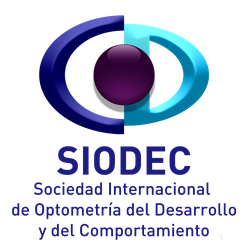
Hannu Laukkanen is an essential figure in the field of neurofunctional optometry. With over three decades of clinical and teaching experience, he has dedicated his career to addressing visual dysfunctions resulting from brain injuries, combining scientific rigor with a deep human sensitivity. His integrative approach and his ability to listen and adapt to each patient have made him a reference in the field.
What are the most common challenges working with patients who have suffered traumatic brain injuries, and how have your methods evolved over time?
More than three decades ago I began seeing ABI/TBI patients as an attending doctor in our university clinics and I didn’t know all that much about all the different elements of brain injury related to vision and which tools might be most useful in helping with brain injury rehabilitation. What helped my growth most was that I was a good listener plus I had the luxury of time experimenting with a variety of methods to see what best helped each patient. By the time I saw them in the clinic, most brain injury patients had been deeply disappointed by the level of brain injury understanding and care from their previous medical providers. Here are some tips from my own experience for optometrists getting into brain injury care:
- Programa tiempo extra para la primera visita. Estos pacientes suelen tener respuestas lentas y problemas de memoria, pero presentan muchos síntomas complejos relacionados con la lesión cerebral que desean compartir con cualquier persona dispuesta a escuchar. Yo creé y validé un listado de síntomas que los pacientes completan antes de la visita, para que los optometristas puedan ofrecer una atención más completa y adecuada.
- Every brain injured patient is different and I learned there is no one best approach, but the ideal optometrist is flexible, experimentative, and will have many different tools that can be tried. Often the best solution that best serves the patient is the application of a unique complex combination of methods that include lenses prisms, tints, selective occlusion, vision therapy and referral to savvy providers in other disciplines who can provide helpful non-optometric care.
Why should vision therapy optometrists take into account the role of the cerebellum in functions such as eye movement coordination, balance, or motor learning?
The cerebellum has a myriad of different essential functions, but the most relevant for vision therapists is the error correcting motor functions, including eye movements, balance and visually-guided action. Commonly, following brain injury this cerebellar error correcting function is diminished. The precise mechanism underlying this cerebellar dysfunction is not known, but from clinical experience we do know that this error-correcting function can be enhanced with targeted vision therapy activities that provide the patient with feedback the patient can sense and understand. To best habilitate the neural communication pathways, it is vital to enhance the patient’s awareness of specifically which feedback loops to attend to, plus set goals for self-enhancement of function. Thus, the patient can practice daily focusing on targeted feedback to self-correct visually guided actions.
What are the main observations made in patients who have undergone these training methods that activate the cerebellum?
Increased sensory and error awareness along with patency of visuo-motor function.
"My hope is that I will have touched the future by stimulating curiosity and a desire for life-long learning in my students"
Based on your experience, what do you find most appealing about teaching in the field of optometry?
I love the creativity and diversity of the higher learning environment. I enjoy constantly interacting with very bright and capable colleagues and students; I have had the opportunity to participate in important research that has filled in answers; It has been very fulfilling to solve clinical mysteries and to have improved patient’s lives. My hope is that I will have touched the future by stimulating curiosity and a desire for life-long learning in students who will pursue solutions to yet unanswered questions.
